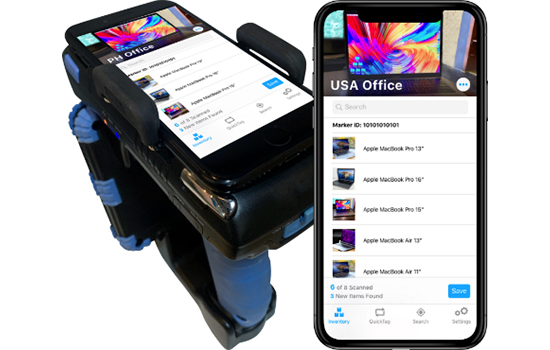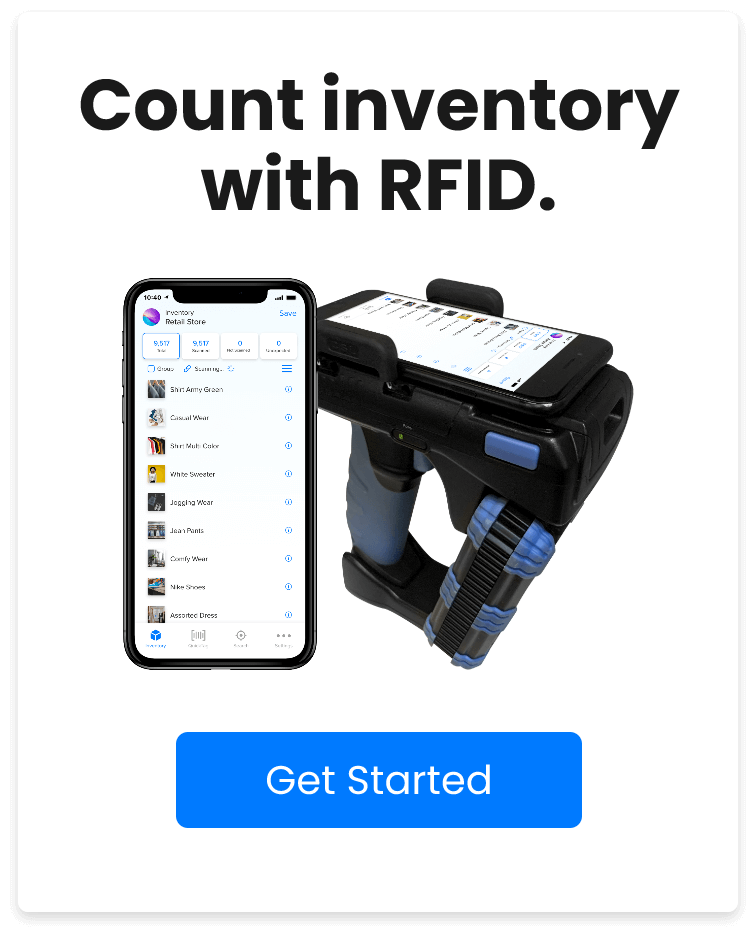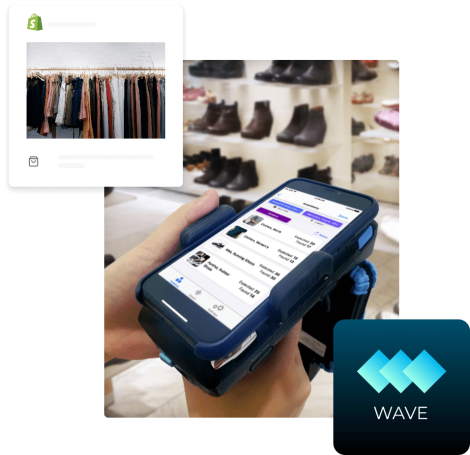Auditing Fixed Assets the Fast Way -- with RFID

THE PROBLEM
Fixed asset tracking and ITAM / IT Equipment tracking are very similar and, typically, related issues.
You may also want to read our guide on How to track your corporate IT equipment.
Fewer than 500 assets?
If you're a small company (up to 100 staff), you may have a spreadsheet of your corporate items. Every year, you print it out and walk around, looking to see where things are. A spreadsheet is pretty cost-effective and probably as accurate as you'd be. It's manageable in a 2 hour to 2-day process.
The primary purpose of this audit is for tax reporting: Do we still have all the items we thought we had? Corporations pay a small tax on all their tangible property. If it's missing, they can stop paying taxes.
For small companies, where RFID can benefit is in high-value items.
The reason you might add RFID is the ability to audit items daily or hourly. For most businesses, this is not a requirement. Most business PCs have low street value, and theft/loss isn't a concern.
Examples:
-
A restaurant may issue iPads / iPods to staff for ordering. A fast check-in/check-out with RFID makes dealing with 100 iPods a snap.
-
Load tool trucks or Gardening trucks with 50 tools for the days' workload. Inventory trucks when they go out and return. Items left on-site can be retrieved before they are permanently missing.
-
IT AV Equipment or loaner items: You may have a toolkit with $20,000 in parts. A line tester, expensive crimp tools, a scope, and multimeter designed to troubleshoot areas. This rolling loot piñata is easy for end-users to knock off items. Not intentionally, per se, but who doesn't covet the Fluke multimeter over that $29 Amazon special?
Audit time for tool-return trailer
Parameters:
- 15 seconds per barcode
- 0.1 seconds per RFID (10 per second)
- Five days per week / 250 days per year
- Yearly audit time required
Time Savings
| Items per day | Barcode Time | RFiD Time | RFID Each Event |
|---|---|---|---|
| 100 | 104 Hours | 45 Minutes | 10 seconds |
| 500 | 520 Hours | 3.5 Hours | 1 Minute |
| 2000 | 2,083 Hours | 14 Hours | 3 Minutes |
If your organization doesn't plan to use RFID 'daily' - it won't be cost-effective on a small scale. If you have five work trucks/carts with 20 items each, that's 100 items per day to scan in/out. 250 events per year / 25,000 item events.
Frankly, it's not possible with a barcode. You can try a barcode sign in/out system. It's too slow. Too cumbersome. People will not use it. With RFID, you can also automate the process -- but that's a different topic, and we will go into that in another how-to.
500 - 50,000 Asssets
Once you get to 500+ assets, your company is probably looking at leases, warranties, product life expectancies.
You're probably putting some permanent asset tags on each item and updating a 'fixed asset' register.
The great thing about RFID is -- it's not more complicated, and it returns over-and-over when it's time to audit the equipment. Additionally, with RFID, you can add doorway audits and track with automated tracking systems like Pogi.
Add an RFID tag, and your audit times will drop by 90%+. Our SimplyRFiD Wave Handheld will get you started tomorrow.
Audit time
Parameters:
- 15 seconds per barcode
- 0.1 seconds per RFID (10 per second)
| Items | Barcode Time | RFiD Time |
|---|---|---|
| 1,000 | 4 Hours | 3 Minutes |
| 10,000 | 41 Hours | 28 Minutes |
| 100,000 | 416 Hours | 3 Hours |
The reason we only do quarterly audits is: It's impossible to do them more frequently. With RFID, it's possible to do them daily—real-time visibility of your inventory.
These numbers are for a single person performing the audit. With fixed, automated readers, this can be even faster.
50,000+ Assets
Here is where RFID is invaluable. At this point, you'd be moving to a global, automated RFID inventory and tracking solution based on our Pogi server and fixed RFID readers.
But, let's not confuse fixed-assets with inventory here.
Inventory is re-saleable goods—things you manufacture and sell. Many companies produce millions of these per year. Item-level inventory tracking is also a critical part of the future item-level supply chain - but has different needs. We wrote a how-to for RFID inventory, also, to look more at the problems here.
Typically at 50,000+ assets, you'll be looking at EAM (Enterprise Asset Management) systems. RFID can provide visibility into those systems, but that's a separate issue, and we will add an article on this topic later.

THE SOLUTION
RFID makes counting your equipment easy, fast, and super-accurate.
Typically, you would tag your equipment with a corporate 'asset tag' when installing or receiving the item. Instead of an asset tag, you will use an RFID tag. Associate the item to that tag number.
The difference is all in the audit step. When you use regular barcode or number based asset tags, you don't gain long term speed benefits. Barcodes are great for accuracy, but they don't account for the labor costs that RFID offers. Or, the automated tracking with things like fixed RFID Readers.
Cost Savings for RFID
Tags
| Tag | Cost |
|---|---|
| Barcode Asset Tag | $0.10 |
| SimplyRFiD RAIN RFID Tag | $1.00 |
| Cost Difference | $0.90 ($2,700 on 3,000 tags) |
Audit time
Assuming the loaded rate for an accountant: $70
| Audit | Time | Cost |
|---|---|---|
| Barcode @ 15 seconds per tag | 12.5 Hours | $875 per inventory |
| RFID @ 10 tags per second | 5 minutes | $6 per inventory event |
Assuming a quarterly inventory, RFID will break-even in its first year with 3,000 assets. RFID will begin payback in future years and allow add-ons like automated tracking and surveillance.
Of course, you'll still need to locate missing items. But, RFID can automatically record item movement by adding in doorway sensors.
THE PROCESS
RFID Tags
Please take a look at our TM4 tags for metal-cased items. These are durable, small tags (4 centimeters) and only work well on metal surfaces. The TM7 has a better range if there is room for that tag. And, the TM7 works on all surfaces equally well.
The IQ6 is excellent if you don't know the surface (metal, glass, plastic, or cardboard). They are a bit larger, but they work on everything. The biggest issue is they are often too tall on smaller IT equipment. They do work great on laptops and are thinner than the TM tags.
Finally, our TX is great on plastic-front items. However, many laptops have a thin metal frame underneath the plastic that often interferes with the TX.
Tagging
Place the tag on the item.
Use the Wave handheld to scan the serial number or model number.
Wave works with our Pogi Server to exchange and store all your data center information.
Auditing
Once you've tagged your items, it's easy to select a location, scan your RFID Tags, and see 'what's missing.'

